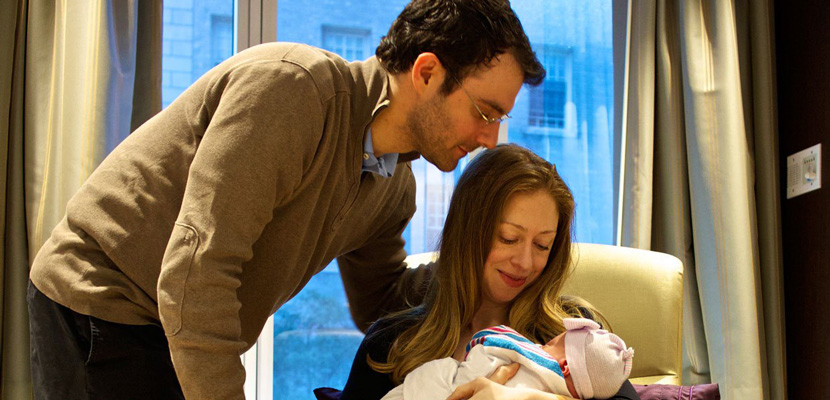Jack Wertheimer and Steven M. Cohen’s “The Pew Survey Reanalyzed,” an examination of data omitted from the Pew Research Center’s 2013 “Portrait of Jewish Americans,” is a welcome addition to the body of commentary on what that study says—and does not say—about American Jewish life today. Their essay, however, even as it raises a number of valid points of interest and concern, is puzzling.
To us, Wertheimer and Cohen seem stuck—too heavily reliant on anachronistic frameworks of analysis and on sources of scholarship that are neither apt nor helpful. Conspicuous among the latter is the late Milton Himmelfarb’s quip chiding Jewish grandparents of children born to interfaith couples that these new family members should be understood as “Christian.” In addition, the two authors posit assumptions and postulate fables that are likely exaggerated or erroneous.
Perhaps most striking in Wertheimer and Cohen’s essay is the absence of relevant statistics, especially in areas where they themselves see hope for potential growth in rates of Jewish engagement. Thus, they recommend communal and philanthropic investment in Jewish overnight camping, but fail to mention that over the last eight years, the number of young Jews enjoying the benefits of residential Jewish camps has already increased from 48,000 to 75,000—many of them, not incidentally, those whom the authors would label “Christian” grandchildren. The Foundation for Jewish Camp anticipates further growth, to as many as 93,000 campers, in the next six to seven years.
Similarly, while urging investment in youth groups, the authors neglect to cite the already burgeoning numbers of Jewish teens engaged in Jewish life and learning through such programs as the B’nai B’rith Youth Organization (BBYO), Moving Traditions, Jewish Student Connection, and Teen Philanthropy. Many of these teens, once again, are “Christian” in the Wertheimer-Cohen definition.
When it comes to the college-age and young-adult population, Wertheimer and Cohen again ignore two clearly successful efforts: the tens of thousands who have connected to Jewish life through Hillel’s re-imagined ways of engaging students on campus and through Moishe House, an international network of post-college homes and opportunities for Jewish engagement, where the number of those involved is likely to increase from the current 25,000 to 95,000 by 2016-17.
It’s worth noting here that half of all millennials who identify themselves as Jews—that is, the age group involved in Hillel and Moishe House—come from mixed families. Indeed, this is one of the primary reasons why the U.S. Jewish population has itself grown over time, an important finding that Wertheimer and Cohen likewise fail to address in their rush to dismiss the mixed-family population as “Christian.”
By design, the Pew study does not endeavor to describe what Jewish life actually looks like today in all its various forms, or how it might evolve in the years ahead. Unfortunately, neither do Wertheimer and Cohen. To give just a few examples:
- 25,000 or more young adults every year will likely be going on Birthright trips to Israel, with an increasing number of them staying for a more extended period and additional growing numbers opting to return to Israel for more deeply immersive experiences.
- 200,000 Jews of all ages take part in Jewish outdoor, food, and environmental events annually.
- Participants at Limmud gatherings worldwide are doubling in number, in some places over very brief periods of time.
- Jewish film and music festivals, museum exhibitions and special events, and in-home text-study groups are enjoying record-level attendance.
- PJ Library, which mails free children’s books and music to Jewish homes, is investing $20 million to expand its reach and infuse relevant Jewish education into the lives of its readers and their grateful families.
In our own work, we strive to be data-informed. Wertheimer and Cohen understand the Pew data well, and we pay close attention to the connection they draw between the “shrinking middle” and the correlative decline of endogamy, “intensive Jewish educational experiences,” and “homes tending toward traditional Judaism.” But, ultimately, data are static, and inadequate to the task of predicting the future without careful consideration of the dynamism of contemporary Jewish life.
Wertheimer and Cohen ignore trends in religious identification and family formation. They fail to consider the implications of advances in medical science for what will certainly be dramatically extended life spans—in which we should reasonably anticipate that Judaism’s vibrancy will attract individuals and families at every point in their lives. Nor do they make any attempt to consider the amount of Jewish learning that is taking place virtually—through means as diverse as JEDLAB (a network of Jewish educators), My Jewish Learning, Project Zug, Reboot, and Sefaria: platforms of engagement for a growing number of individuals who may not be accounted for in the Pew study.
Again by design, the Pew study does not predict the future and makes no effort to project how hundreds of thousands of diverse Jews of all ages—who we believe are also largely unaccounted for in Wertheimer and Cohen’s flawed analysis—will continue to invigorate contemporary Judaism and invent new ways to experience American Jewish life.
In the end, Wertheimer and Cohen’s depiction of this life as in need of being pulled back “from the brink” is another caricature of Jews as (in the phrase of the late Simon Rawidowicz) an “ever-dying people.” This belies our extraordinary history as a people and an ever-renewing faith tradition that, time and again, have demonstrated an ability to evolve and adapt, thereby avoiding the cliff that Wertheimer and Cohen have artificially constructed.
More about: American Jewry, Intermarriage, Jewish continuity, Pew Survey









